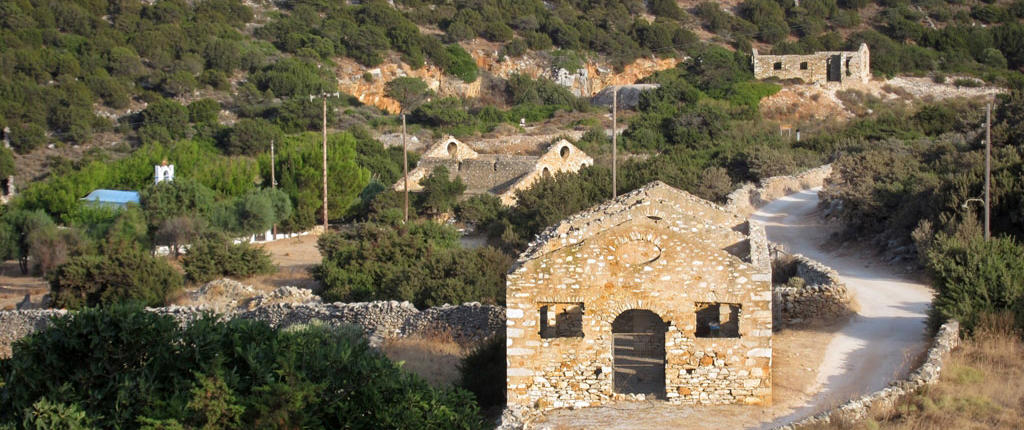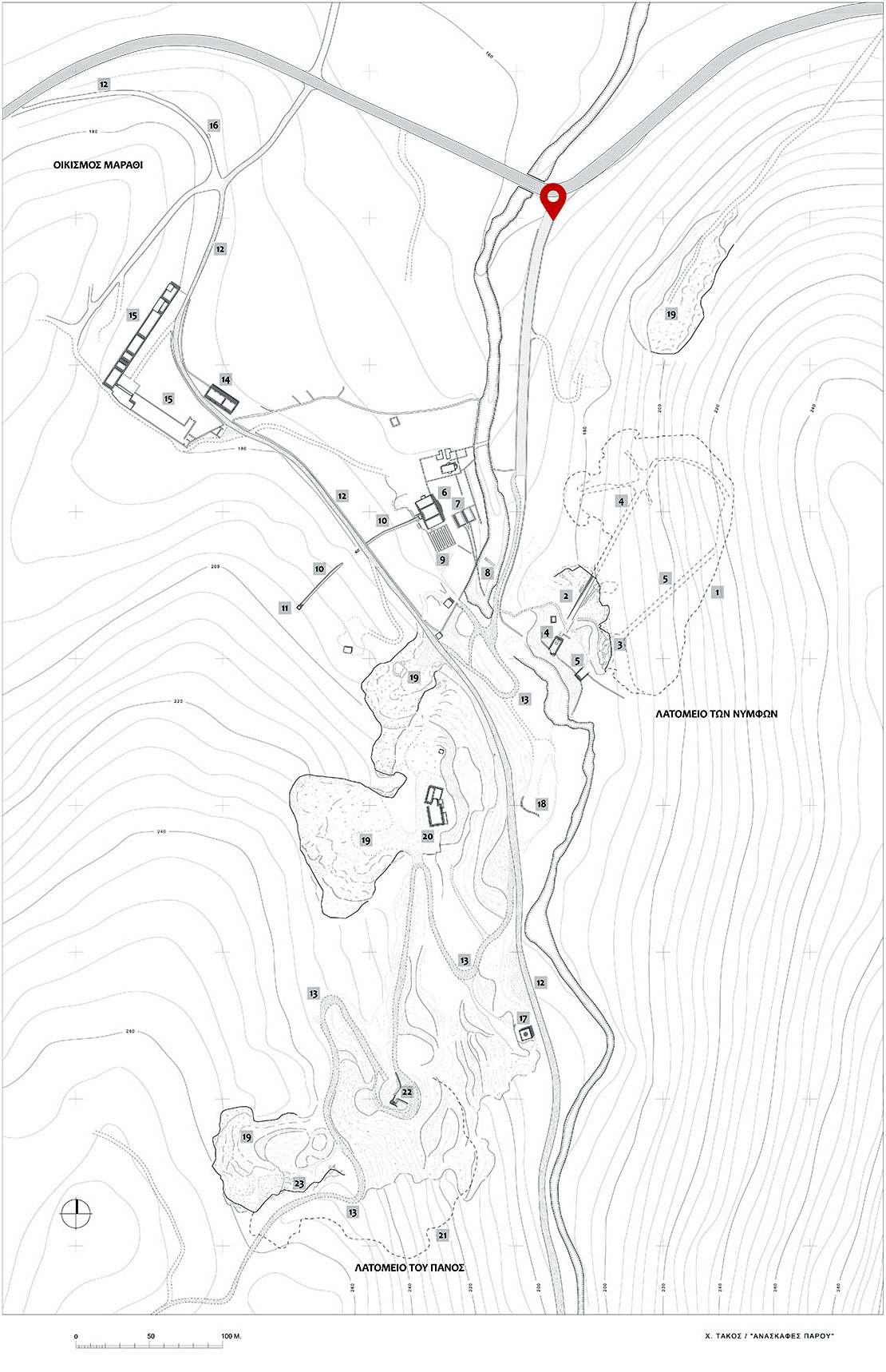In 2018, at the initiative of the late archaeologist leading the excavations in the site of Koukounaries, Dimitrios Skillardi, the area west of the ancient Nymphs quarry, was formally characterised as a Historic Site. According to the stated grounds for the designation, the region constitutes “a unique site of continuous human activity from antiquity to modern times and a single and unified whole, an important testimony for the development of the area from a technical, economic, architectural, cultural and cultural point of view” (Government Journal, No 97/17.05.2018).
The designated area includes the open-air part of the quarry and the 19th-century industrial installations built for the re-exploitation of marble, which constitutes a particular case of the industrial heritage of the Aegean.
In 1879 the Belgian Marble Company was founded and became the Greek Marble Company of Paros (1881-1884). The Company’s operation was short-lived due to the limited production of marble and the exhaustion of lychnite since ancient times.
The Company’s mining activities focused on the exploitation of the ancient underground quarry of the Nymphs and the opencast quarries around the underground quarry of Pan. Andreas Cordellas gave the conventional names of the ancient underground quarries in the 19th century. The link between all the quarrying installations was a railway line about 5 km long to transport the marble to the port of Parikia. The Company’s facilities, most of which are preserved to the present day, included the steam boiler building (large engine room) (Ref. image #1), a 100-metre-long smoke duct (Ref. image #2), a chimney (Ref. image #3), water pipes and water tanks for exploiting the waters of the stream running through the site, as well as two winch stations (Ref. image #4) at the entrance to the ancient quarry. A large building complex at a distance from the quarries provided workers’ and employees’ accommodation (Ref. image #5), warehouses and workshops (Ref. image #6). A lime kiln (Ref. image #7) at the southern end of the complex marked the end of the railway.
Marble quarrying operations continued in the area until the early post-war decades of the 20th century, mainly exploiting the opencast quarries.
Text and photos: Christos Takos


